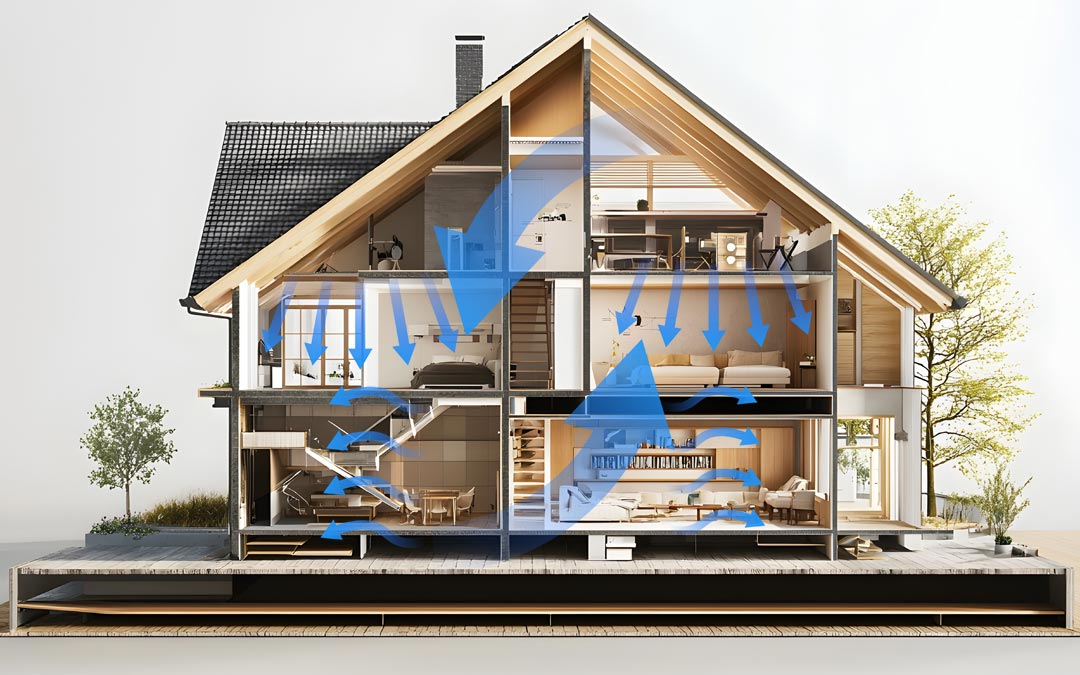Multi-level homes offer distinct advantages, but they often present unique challenges when it comes to heating and cooling. Uneven temperatures, with the upstairs sweltering in summer and the downstairs freezing in winter, are a common complaint. An HVAC zoning system offers a smart, energy-efficient solution by allowing homeowners to control the temperature in different areas of their homes independently. Read on for a closer look at how to gain more precise control over your HVAC system.
How Zoning Systems Work
An HVAC zoning system divides your home into separate climate zones, each controlled independently by its own thermostat or sensors. These systems use dampers in the ductwork to regulate airflow, directing heated or cooled air where it’s needed most.
Zoning is especially beneficial for multi-level homes because heat naturally rises, leading to temperature imbalances. A well-designed zoning system ensures efficient air circulation and prevents extreme differences between floors, ultimately increasing comfort and savings.
Importance of Return Air in Multi-Level Homes
The placement of return air vents is crucial to the functionality of the HVAC zoning system. As a general guideline, in any two-story home, the return air should be located on the top floor in a central location. This setup facilitates the efficient circulation of air and allows the zoning system to maintain balanced temperatures throughout the home.
Key Benefits of an HVAC Zoning System
1. Improved Comfort Throughout Your Home
One of the biggest advantages of zoning is that it eliminates hot and cold spots. Instead of relying on a single thermostat to regulate your entire home, each zone has its own temperature control. This means:
- Bedrooms upstairs can stay cool while the living room remains warm.
- Unused rooms don’t receive unnecessary heating or cooling.
- Each family member can enjoy their preferred temperature setting.
Paired with proper return air placement ensures that the system can effectively respond to varying temperature needs in different areas, promoting optimal comfort and energy efficiency.
2. Increased Energy Efficiency and Savings
Zoning systems reduce energy waste by heating and cooling only the areas in use. Instead of running the HVAC system at full capacity for the entire home, zoning allows for targeted temperature control. This results in:
- Lower monthly energy bills.
- Less strain on your HVAC system, extending its lifespan.
- More efficient heating and cooling, reducing environmental impact.
For even better efficiency, homeowners can pair a zoning system with room sensors that detect occupancy and adjust temperatures accordingly. This prevents unnecessary energy use and ensures maximum comfort where it matters most.
3. Customized Temperature Control for Different Zones
A single thermostat often struggles to maintain consistent temperatures across multiple floors. With zoning, each area of your home gets its own thermostat or sensor, allowing for precise climate control in specific zones. This is particularly useful for:
- Homes with multiple stories.
- Rooms with large windows that heat up quickly.
- Areas with different insulation levels.
- Guest rooms or home offices that need occasional heating or cooling.
With the right system in place, you can enjoy personalized comfort without constantly adjusting the thermostat.
A Smart Investment for Central Oregon Homes
HVAC zoning systems offer multi-level homeowners a powerful solution to combat uneven temperatures and energy wastage. By addressing the unique challenges of multi-level homes, zoning systems offer a cost-effective and efficient way to create a more comfortable and energy-efficient living environment. Contact Bend Heating & Sheet Metal today to discuss a solution for your home!
